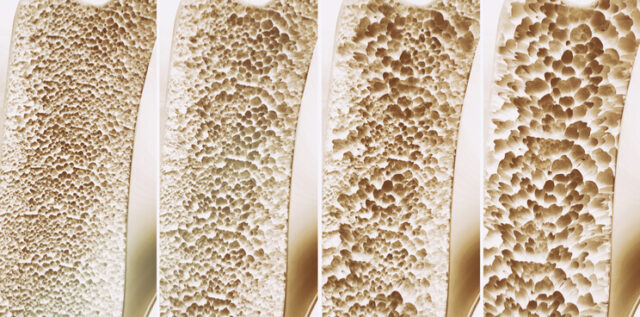
Having an injury is difficult at any point in life. It doesn’t matter what the injury is it will affect your ability to undertake normal activities.
Of course, some injuries are less obvious than others. For example, there are approximately 165,000 broken bones every year in Australia, thanks to poor bone health. These can often be avoided, but they are also very obvious, making it easier to seek treatment and understand the injury.
Stress fractures are less obvious. They are small cracks in bones or severe bruising. Although they can be very painful, there are often no outward signs.
The Cause Of Stress Fractures
Two main factors cause stress fractures.
Excessive Exercise

If you undertake the same exercise every day, your bones will generally get stronger, reducing the risk of a stress fracture. However, if you increase the amount of exercise you’re doing too quickly, you’ll place too much stress on your bones, muscles, and ligaments, resulting in stress fractures.
The same is true if you start exercising intensively when you haven’t exercised for a long time.
Brittle Bones

The other key factor is osteoporosis. This is a disease that reduces the mineral content of your bones and makes them porous. In effect, bone loss is faster than bone growth. The bones will become weaker and are more likely to fracture or break.
Managing A Stress Fracture
If you think you have a stress fracture, then you need to head to your doctor and get it checked out. This will confirm the issue. You’ll then have guidance regarding how to treat the injury.
In general, not dealing with a stress fracture will result in it getting worse. It is also likely to result in improper healing, which will increase the likelihood of arthritis.
Remember, working through the pain is not a sign of strength. You’ll just be making the issue worse.
Treating The Stress Fracture

The exact treatment will be devised by your doctor and discussed with you, but it is likely to include the following.
Stopping The Activity
You’ll probably know what activity causes you pain and what you were doing when the stress fracture occurred. It’s likely to be a regular form of exercise, especially if you’ve just increased your workout intensity.
Unfortunately, you’re going to need to stop the activity temporarily. Continuing to exercise will make the fracture worse, risking a break or improper healing.
You’ll need to stop the exercise completely for some time, usually 7-14 days. Then you can gradually start doing it again in agreement with your doctor. But it will be a while before you can hit the same intensity.
Visiting A Physio

It’s important to keep moving the affected area, even though you can’t continue the exercise you were doing. That’s where experts like therapyservicesphysio.com.au in Darlinghurst step in. They can guide you through the best exercises to maintain muscle strength while your fracture is healing.
They’ll also help relieve the pain and can give guidance on the best way to start exercising again or alternatives to your previous exercise.
It is important to listen to your physio as they have experience in dealing with this type of injury. Following their advice and doing the exercises they provide properly will help to ensure you make a full recovery.
Cold Treatment

In the initial days, you should place an ice pack on your stress fracture. This reduces blood flow to the area, which helps to prevent swelling. Some experts may recommend alternating this with a heat pack as the heat will expand your blood vessels, increasing the supply of nutrients to the affected area, and helping the fracture to heal.
Cross-Training

This is usually not allowed for the first 7-14 days. It will then be recommended instead of your regular exercise. The point of cross-training is to exercise the affected area without putting any pressure on it.
In other words, you’ll be avoiding impact exercises like running. Instead, cycling and swimming will help you to maintain fitness and strength without stressing the injury.
This is important as you need to maintain muscle strength and movement while you heal. You’ll only be allowed to move back to impact exercises once you can complete low-impact exercises without pain for a significant period of time.
It is essential not to rush this stage of your recovery.
Supporting Your Feet
The most common place for a stress fracture is in your foot. This is because it absorbs all the impact when exercising. You’ll need to monitor your foot, ankle, and leg. If there is any sign of swelling, they will have to be elevated.
That means laying down and lifting your leg into the air above the heart level. This decreases blood flow to the leg and reduces swelling and inflammation.
The Right Shoes

Your doctor and your physio will advise if you need to consider changing your footwear while your body recovers. It is common for people with stress fractures to have stiff-soled shoes or even a wooden sole, this helps to give your foot support and ensure it heals properly as you move around.
You may also need to use crutches to help minimize the weight placed on an injured foot.
The Long Term

Following your doctor’s instructions will help the stress fracture to heal properly. This is when you can start your old exercise. But, it would be best if you built up slowly to the level you were at.
The key to ensuring you don’t have another stress fracture in the future is in exercising at the appropriate level. Never try to increase your workout by more than 10% at a time; this is enough to build strength and stamina without risking an injury.
It’s the most effective way of preventing a repeat of your stress fracture in the future. Of course, it’s also worth having yourself checked for osteoporosis. If you are suffering from this bone disease, some treatments can help.






